 |
Generational Differences - Managing The Complexity |
1.00 |
Could dealing with people get any more difficult? Today’s business environment brings many challenges with four different generations working together for the first time. Communication, respect, recognition, retention, interaction with others, and work life balance mean something different to each generation. If not understood and managed effectively workplace conflict, poor communication, low morale, and high turnover can occur. Understand and discover the key values and contributions among these four generations. Each generation provides intrinsic value to an organization. You will learn how to capitalize on the strengths of the Traditionalists, the Baby Boomer’s, Generation X, or the Millennial Generation (Gen Y). By implementing effective strategies for communication, recognition, development, retention, and leadership you will uncover the hidden talents of each generation while minimizing the risk of knowledge transfer. You will learn the key generational differences and similarities in each of these areas. Join us as we share with you some of the many generational challenges in today’s work environment. |
 |
Implicit Bias (Corrections) |
1.00 |
In this course, you’ll learn about implicit biases that happen despite our best intentions. After completing this course, you will be able to:
Define implicit bias.
Describe how implicit bias can impact the workplace or an organization.
Identify the steps you can take to further educate yourself about this topic. |
 |
Exploring Developmental Needs and Characteristics: Age Group 5 to 7 for Paraprofessionals |
1.00 |
Certain developmental needs and traits are associated with younger school-age children, while others are typical of older school-age children. While the differences between school-age children of different ages are not clear-cut, there are some general traits and tasks that are often associated with younger school-age children. This course delves into the specific traits of students between the ages of 5 and 7. |
 |
Connection Planning in Long-Term Care |
1.00 |
This module includes training for staff and providers in the importance of social connection and practical strategies learners can use to promote social connectedness in long-term care. The module explains how to implement Connection Planning, a brief, person-centered behavioral intervention for developing resident care plans that address social connection. Connection Planning includes evidence-informed, practical strategies to promote meaningful social connection among residents in long-term care. |
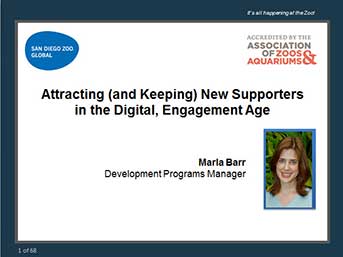 |
Attracting (and Keeping) New Supporters in the Digital, Engagement Age |
1.00 |
There are more non-profits in the market every day, but less donors. Is this a recipe for disaster, or an opportunity for us to transform what donor acquisition, retention and stewardship look like in our digital age? Join us during this 60 minute webinar to learn what innovative donor engagement in 2013 looks like by walking through some of the San Diego Zoo Global's recent digital campaign hits and misses to see how you can help your organization rise above this changing donor landscape. |
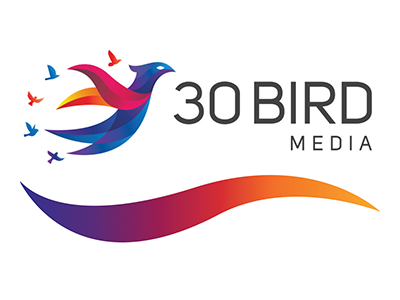 |
Microsoft Excel 2019 Complete |
24.00 |
Excel 2019 Complete provides the concepts and skills to be productive with Microsoft Excel 2019, starting with fundamentals and working up to advanced tools and techniques. This course maps to the objectives of the Microsoft Office Specialist and Expert exams for Excel 2019. Objective coverage is marked throughout the course, and you can download an objective map from 30bird.com.
Students will benefit most from this course if they want to use Excel 2019 to perform real-world tasks, from common workplace tasks to complex operations with large amounts of data. If students intend to take a Microsoft Office Specialist or Expert exam for Excel, this course offers complete coverage of all the objectives for both exams.
The course assumes students know how to use a computer, and that they're familiar with Microsoft Windows. It does not assume that they've used a different version of Excel or another spreadsheet program before. |
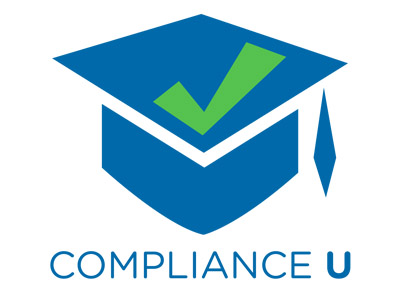 |
The NoFEAR Act (Corrections) |
0.25 |
This course will inform participants of the Notification and Federal Employee Antidiscrimination and Retaliation Act, also known as the NoFEAR Act. At the conclusion of this course, participants should understand the basic provisions of the NoFEAR Act, know what Antidiscrimination and Whistleblower Protection Laws protect them, and understand how to file a complaint alleging discrimination, retaliation, or a violation of the Whistleblower Protection Laws. |
 |
Coaching: Fundamentals of Coaching (Instructor Guide) |
1.00 |
Coaching is the continuous effort to help employees maximize their abilities through personalized counseling and advice. The coaching process not only trains employees to become familiar with business procedures and expectations, but also motivates them to reach both individual and company goals.
Coaching is beneficial to employees because it encourages them to discover their worth and potential. Through proper coaching sessions, employees build confidence, improve their work habits, and increase their productivity.
In this course you will learn to:
1. Define coaching and identify the qualities of an effective coach
2. Build a coaching foundation and plan a coaching strategy.
This Instructor's Edition of this course includes notes and suggestions to assist you in presenting the material, whether in an in-person classroom setting or as an instructor-led online or distance-learning course. It also provides you with the answers to questions found in mid-lesson activities, as well as in the quiz that concludes the course. |
 |
Quality Management: Customer Orientation (Instructor Guide) |
0.75 |
Customer orientation is an organizational mindset in which meeting the needs of the customer becomes an organization’s focus. Customer orientation is an important aspect of quality management because it ensures customer satisfaction by integrating the customer’s needs into strategic planning, product development, and product delivery.
There are three components that comprise customer orientation: awareness of the market, communication of market intelligence to the entire organization, and initiatives to make use of the market intelligence.
This Instructor's Edition of this course includes notes and suggestions to assist you in presenting the material, whether in an in-person classroom setting or as an instructor-led online or distance-learning course. It also provides you with the answers to questions found in mid-lesson activities, as well as in the quiz that concludes the course. |
 |
Human Relations Skill Development: Leadership Styles and Conflict Management for Paraprofessionals |
1.50 |
Research indicates that those in positions of leadership use a variety of different leadership and management styles. A person’s effectiveness as a leader is often directly linked to their leadership style. It is important for paraprofessionals to be aware of the assumptions and characteristics of different leadership styles. Knowledge of different leadership styles can help paraprofessionals reflect on their own leadership style, and assess its effectiveness. It can also help paraprofessionals take a proactive approach to applying different leadership styles and techniques, depending on the situation.
Leaders also use a variety of different styles when it comes to managing and resolving conflicts. By understanding how to diagnose the causes and dynamics of conflict, and understanding the characteristics of different conflict management styles, paraprofessionals can choose the best conflict management strategy for each situation. |
 |
Differential Diagnosis of Dementia |
1.00 |
At the end of this course, you will be able to:
Define Alzheimer's disease, and identify its risk factors.
Examine the differences between Alzheimer's disease and dementia.
Explore the pathology and the clinical presentation of Alzheimer’s disease, frontotemporal dementia and dementia with Lewy bodies.
Examine the diagnostic tests and tools used in the diagnosis of dementia. |
 |
Strategic Decision Making: Preparing to Make Decisions (Instructor Guide) |
1.50 |
In this course you will learn to: identify the factors that influence the outcome of a decision, and follow the steps of the decision-making process, define your decisions appropriately by establishing objectives, identify the problems decision frames can present, and the actions you can take to understand decision frames, and identify the guidelines for avoiding the problem of overconfidence, and describe the techniques for managing uncertainty.
This Instructor's Edition of this course includes notes and suggestions to assist you in presenting the material, whether in an in-person classroom setting or as an instructor-led online or distance-learning course. It also provides you with the answers to questions found in mid-lesson activities, as well as in the quiz that concludes the course. |
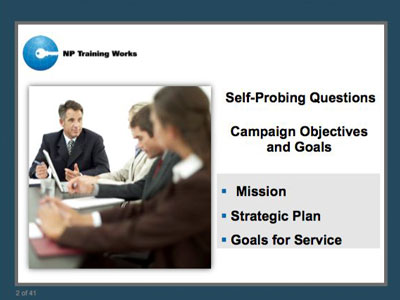 |
Art of the Capital Campaign |
1.00 |
As you learn how to plan, operate and conduct a capital campaign you can find a lot of advice on the science of fundraising. Often, however, your success will depend more on the Art of the Practitioner (you) than the rules of the game. This Webinar is designed to help you become a capital campaign artist by giving you a roadmap to travel from pre-campaign, feasibility, planning, infrastructure, phases and post-campaign wrap-up. You’ll learn the pitfalls to avoid and important tasks to accomplish to become a capital campaign impresario. You’ll learn the tools to help you enjoy the ride. |
 |
CompTIA PenTest+ Certification - Exam PT0-002 |
40.00 |
CompTIA PentTest+ Certification - Exam PT0-002 provides the knowledge needed to plan and perform penetration tests and other security engagements, using a vendor-neutral format. This includes planning engagements, performing reconnaissance to find vulnerabilities in a target organization, exploiting vulnerable targets, and creating followup reports. This course maps to the CompTIA PenTest+ PT0-002 certification exam. You can download an objective map for the course from www.30bird.com.
You will benefit most from this course if you intend to become a certified penetration tester, or if you are a security professional who wishes to understand cybersecurity from an offensive perspective. This course assumes that you have some applied knowledge of computers, networks, and cybersecurity principles. Knowledge equivalent to the CompTIA Security+ certification is helpful but not necessary.
|
 |
Effective Presentations: Audience Analysis and Supporting Material (Instructor Guide) |
0.84 |
Audience analysis is the process of determining the audience’s needs, so you can give an appropriate presentation. You should determine the reason people will attend your presentation; it might be a requirement, or they might be interested in the topic. It is also helpful to determine your audience's attitudes, interests, and level of knowledge.
This Instructor's Edition of this course includes notes and suggestions to assist you in presenting the material, whether in an in-person classroom setting, or as an instructor-led online or distance-learning course. It also provides you with the answers to questions found in mid-lesson activities, as well as in the quiz that concludes the course. |
 |
Social, Emotional, and Behavioral Supports for Teachers |
1.00 |
This course explores how to support students emotionally, socially, and behaviorally. It is important to understand the value of building rapport with students to promote resilience. Additionally, this course will explore the components of student behavior, how to identify the function of behavior, and how to create a supportive environment for students. |
 |
Business Ethics: Ethical Decisions (Instructor Guide) |
1.67 |
In this course you will learn to: define business ethics, describe how to balance personal values and organizational ethics, and identify common ethical dilemmas and their causes, and describe the DECISIONS method of making ethical decisions and identify the barriers to making such decisions. |
 |
The Stages of Escalation and How to Manage Them |
1.00 |
We know that the most effective learning is relationally based. The same is true when we intervene with students in crisis: the deeper we’ve established relationships with students, the more power we have to guide them to calm and safety. Crisis situations can leave a wake of difficult thoughts and feelings. Students and teachers can feel lingering shame, anger, fear and confusion for days—even weeks or months—after a traumatic event. The good news is that crisis situations do not have to be harmful to a relationship, and in fact, they can serve as a doorway to deeper trust, intimacy, and respect. |
 |
Creativity and Innovation: Promoting Team Creativity (Instructor Guide) |
1.34 |
The purpose of a team is to bring together people with diverse personalities, knowledge, education, and experience. This combined diversity encourages creativity and productivity to accomplish a common goal. Teams might consist of people from a single department or several departments.
Teams can generate new ideas, expand on or improve current ideas, make decisions, and solve problems. Teams can also be assigned to a specific task or be made responsible for a broader area, such as responding to changing customer expectations. When team members recognize their roles in a team, and the manager performs his responsibilities, creativity has a better chance of flourishing.
In this course you will learn to: identify characteristics of creative teams, and manage these teams effectively, conduct creative team sessions, and conduct brainstorming sessions, and use creativity to solve problems.
This Instructor's Edition of this course includes notes and suggestions to assist you in presenting the material, whether in an in-person classroom setting, or as an instructor-led online or distance-learning course. It also provides you with the answers to questions found in mid-lesson activities, as well as in the quiz that concludes the course. |
 |
Transition Planning: Preparing Students with IEPs for Life After High School |
1.00 |
This course covers transition planning for paraprofessionals and teachers. Transition planning is a process that supports movement from school to post-school activities for a student with a disability. It’s a set of coordinated activities focused on improving the academic and functional achievement of the student as they move into various post-secondary vocational and educational settings. |
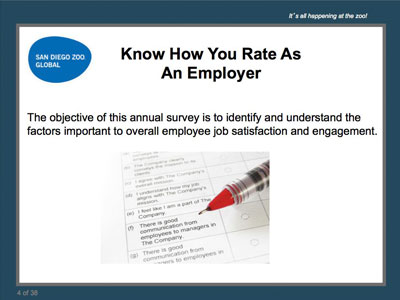 |
Effectively Managing an Employee Engagement and Satisfaction Survey |
1.00 |
There is much scientific evidence that clearly shows a direct correlation between employee engagement/satisfaction and organizational performance. Engaged employees are more productive, profitable and customer service oriented. Engaged employees drive company innovation and have increased tenure. Learn how to conduct a World Famous Employee Satisfaction Survey, and incorporate the right questions to ask to also measure Employee Engagement - which will definitely benefit your organization by showing employees that you have a genuine interest in their feedback. |
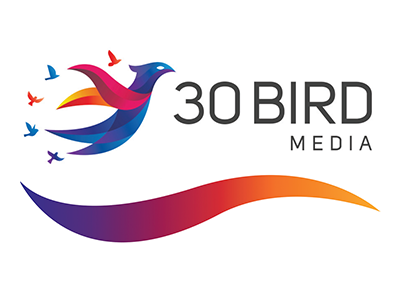 |
Microsoft Azure Fundamentals - Exam AZ-900 |
24.00 |
Azure Fundamentals - Exam AZ-900 provides basic knowledge of cloud concepts, Azure cost management and Service Level Agreements, core Azure services, core solutions and management tools, general security and network security features, and identity, governance, privacy, and compliance features. You will find this course valuable if you are just beginning to work with cloud-based solutions and services or are new to Azure. This course maps to the Azure Fundamentals AZ-900 exam.
You will benefit most from this course if you intend to take the Azure Fundamentals AZ-900 exam. Azure Fundamentals can be used to prepare for other Azure role-based or specialty certifications, but it is not a prerequisite for any of them.
This course assumes you have basic knowledge of general technology concepts, including concepts of networking, storage, compute, application support, and application development. |
 |
Combating Sexual Harassment in the Workplace (Spanish) (Corrections) |
0.75 |
En los últimos años, el tema del acoso sexual en el lugar de trabajo se ha convertido en el centro de atención nacional, trayendo consigo una renovada conciencia sobre la naturaleza grave e inaceptable de estas acciones y las graves consecuencias que conllevan.
Según la Ley del Estado de Nueva York (vigente en octubre de 2018), todos los empleadores del estado deben establecer una política de prevención del acoso sexual que incluya capacitación anual de conformidad con la Sección 201-G de la Ley Laboral.
Este curso fue desarrollado por CypherWorx, Inc. en alineación con los materiales de capacitación desarrollados por el Departamento de Trabajo y la División de Derechos Humanos para superar los estándares requeridos por el estado de Nueva York.
A través de este curso, los alumnos: Obtendrán una mejor comprensión de lo que se considera acoso sexual; Aprenda cómo denunciar el acoso sexual; y Obtenga información sobre las opciones de informes externos.
Al completar este curso: Comprenderá mejor lo que se considera acoso sexual; Aprenderá cómo reportar el acoso sexual; Aprenderá sobre las opciones de informes externos. |
 |
Managerial Leadership: Employing Motivational Strategies (Instructor Guide) |
0.50 |
You need to use motivational strategies in your leadership to help your employees perform optimally, and to make them feel as though they are helping meet a need. When you motivate your employees to accomplish their goals, and give them the necessary feedback to optimize their performance, they feel they are helping meet the organization’s needs.
You, your employees, and your organization all benefit when you use motivation in leadership. You benefit because, through motivation, your work group will perform optimally. Your employees benefit because they experience job satisfaction and success in accomplishing their goals. Your organization benefits because its members are more committed to helping it be successful and grow.
In this course you will learn to: motivate employees and overcome employee apathy.
This Instructor's Edition of this course includes notes and suggestions to assist you in presenting the material, whether in an in-person classroom setting or as an instructor-led online or distance-learning course. It also provides you with the answers to questions found in mid-lesson activities, as well as in the quiz that concludes the course. |
 |
Remote Learning in a Tiered Behavior Framework |
1.00 |
This course covers implementing strategies for remote learning in a tiered behavior framework. A different setting for learning requires adaptations to instruction, engagement, and response to students. School and family partnerships lay the foundation for supporting students in a Multi-Tiered System of Support (MTSS). |


























